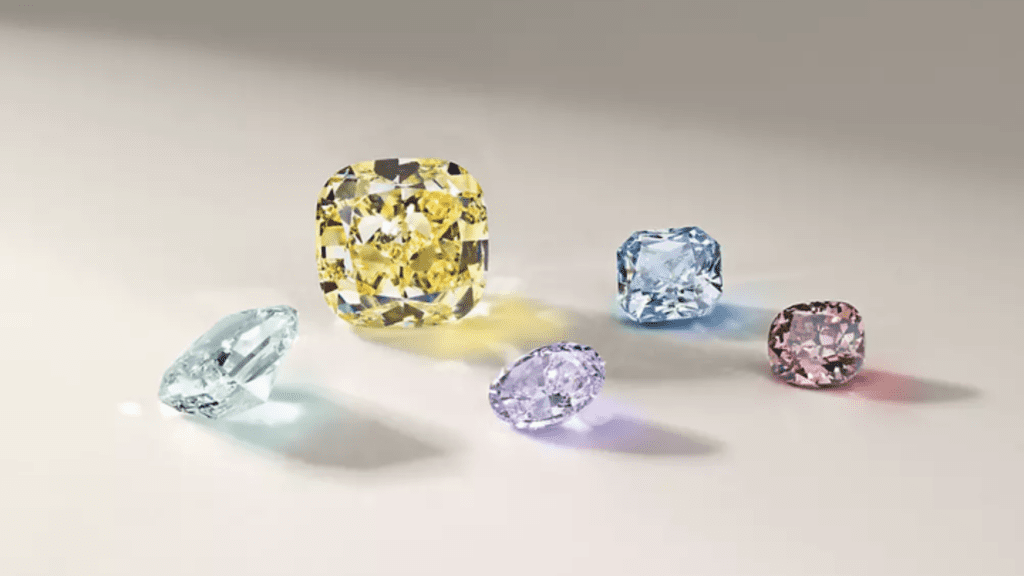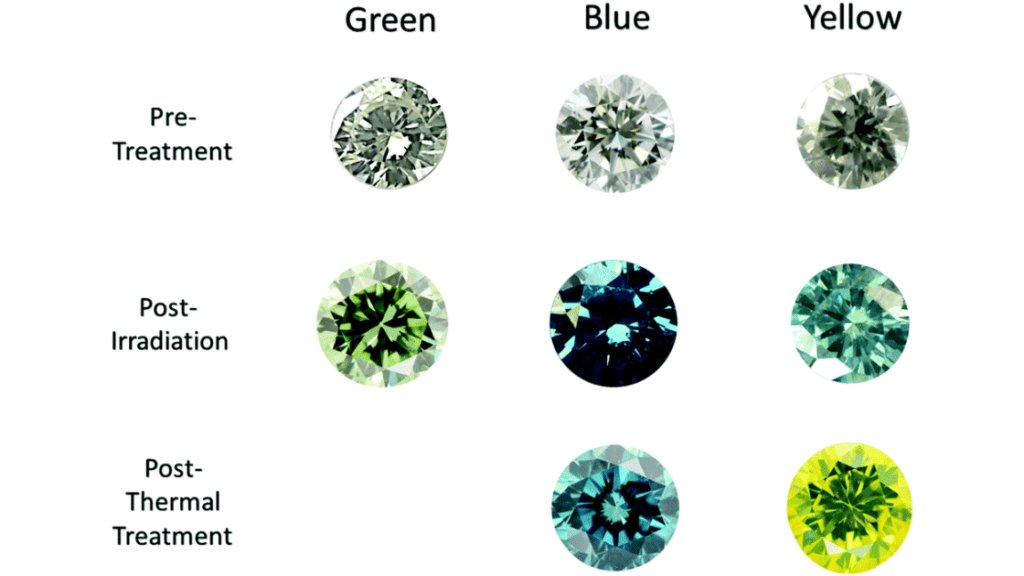Lab-Grown Diamond Prices – March 2025
For the first time, PriceScope is proud to launch our comprehensive Lab-Grown Diamond Price Analysis, at the beginning of each month, we will provide actionable insights into this rapidly evolving…
Diamonds, with their inherent beauty, have long been cherished as symbols of love, commitment, and luxury. However, not all diamonds naturally possess the brilliance and clarity we often admire. As technology advances, so does our ability to enhance diamonds through various treatments. These treatments can improve a diamond’s appearance by altering its color or clarity. Buyers need to be aware of these treatments, as they can impact the value, durability, and care of the stone.
A natural diamond is a gemstone formed over billions of years deep within the Earth under extreme heat and pressure. Made almost entirely of carbon, natural diamonds are renowned for their hardness, brilliance, and rarity. Unlike lab-grown diamonds, natural diamonds are created through geological processes, making each one unique. They are often sought after for their beauty and value, symbolizing enduring love and luxury.
Educate Yourself Further: Not quite ready to make your diamond purchase just yet? That's okay! PriceScope is committed to educating its users. Check out our vast library of educational content to better understand natural diamonds and make a confident decision when you're ready.
Diamonds treated to enhance their characteristics undergo rigorous testing, often requiring advanced technology to detect. Leading gemological laboratories, such as the Gemological Institute of America (GIA), conduct sophisticated assessments to identify and certify diamonds that have been treated, ensuring transparency and consumer confidence.
The jeweler applies a thin layer of material to the surface of a diamond to either mask its original color or introduce a new one. However, coatings are not permanent—they wear off over time, especially when exposed to heat or chemicals. Because of their temporary nature, reputable institutions like the Gemological Institute of America (GIA) do not issue grading reports for coated diamonds.

Image Source: Blue Nile
Gemologists use high-energy electrons to alter a diamond’s color, often creating stunning shades of blue, green, or yellow. They may follow this process with annealing (a heating process) to further enhance the stone’s hue. While irradiated diamonds remain stable for daily wear, they require special care during repairs involving heat.

Image Source: RSC Publishing
Find the Best Deals on Natural Diamonds: Ready to purchase a natural diamond? Use PriceScope’s Diamond Search to compare options from trusted vendors like Whiteflash, Blue Nile, and James Allen. Make sure you get the best value for your investment.
Annealing involves controlled heating and cooling to adjust the color of a diamond. This method is frequently used to produce black diamonds, which are often treated rather than naturally occurring. Annealing is considered a stable treatment, and diamonds treated in this way can receive a grading report from GIA.
HPHT treatment uses extreme pressure and heat to change a diamond’s color, typically enhancing the hue of brownish diamonds into more desirable shades like yellow or green. This process mimics the natural conditions under which diamonds form and is stable enough for GIA certification.
Join the PriceScope Online Community: Have questions about diamond treatments? Connect with experts and fellow diamond enthusiasts in the PriceScope Online Community. Get advice, share experiences, and stay informed on all things diamond-related.
Laser drilling is used to improve a diamond’s clarity by creating tiny channels that allow the introduction of a bleaching agent to remove dark inclusions. These drill holes are permanent and are marked on GIA’s diamond grading reports. However, if the drill holes are later filled with foreign substances (such as in fracture-filling treatments), GIA will not grade the diamond.
Image Source: Whiteflash
This method involves filling internal cracks with a glass-like substance to make the diamond appear clearer. While this treatment can significantly improve the appearance of a diamond, it is not considered permanent. Common cleaning methods and exposure to heat can damage the filler, sometimes irreparably altering the diamond’s appearance. As a result, fracture-filled diamonds are not graded by GIA.
Image Source: Whiteflash
Looking for quality diamonds without breaking the bank? A CUT ABOVE® is Whiteflash's exclusive collection of certified diamonds. Browse Whiteflash Diamond Range
Buying a treated diamond can be a cost-effective way to acquire a beautiful stone, particularly if you’re drawn to rare fancy colors that may be out of reach in their natural form. However, understanding the treatments that a diamond has undergone is crucial for proper care and valuation. Reputable retailers and wholesalers are required to disclose any treatments, but for complete peace of mind, selecting a diamond with a GIA grading report is the best way to ensure transparency and quality.
In summary, natural diamond treatments are sophisticated techniques that can significantly enhance a diamond’s appearance. Whether you’re seeking vibrant colors or improved clarity, these treatments open new possibilities while maintaining the enduring beauty of diamonds. Just be sure to partner with trusted sellers and rely on gemological reports for confidence in your purchase.

Retail Diamond Prices Chart Updated Monthly.

For the first time, PriceScope is proud to launch our comprehensive Lab-Grown Diamond Price Analysis, at the beginning of each month, we will provide actionable insights into this rapidly evolving…
For over two decades, PriceScope has delivered comprehensive insights into the online retail diamond market, empowering prosumers, traders, and industry professionals with actionable natural diamond price analysis. This month’s analysis examines…
A $25,000 budget for an engagement ring gives you access to a wide range of beautiful designer options. This budget allows you to invest in a larger diamond, a unique…

Want to stay updated on the most recent blogs, forum posts, and educational articles? Sign up for Bling News, PriceScope’s weekly newsletter.